Women Advancing? The Myers Report Takes a Hard Look at Gender Parity
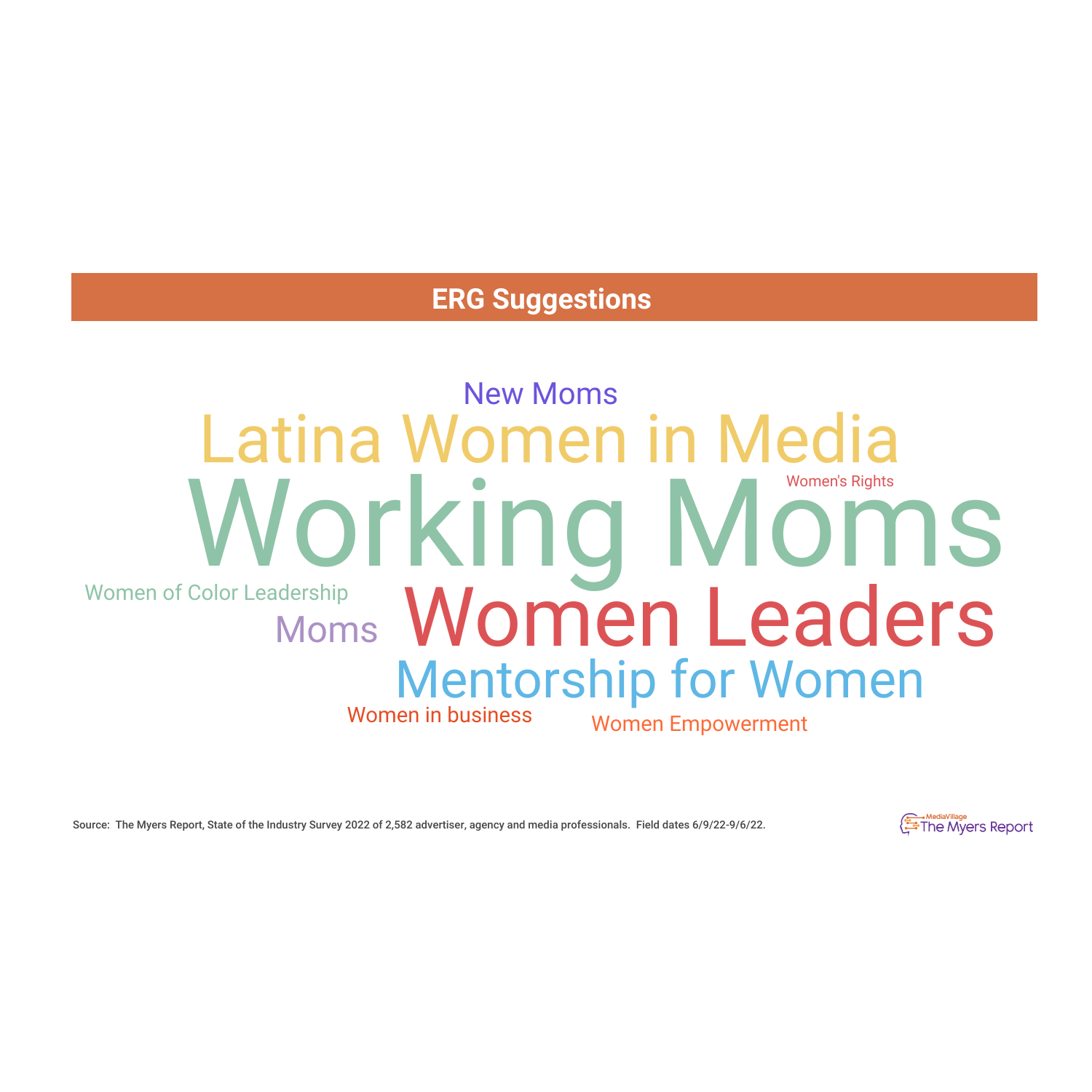
To mark International Women’s Day, The Myers Report delved into leading indicators from national, global and industry-specific studies to assess the state of gender parity. We begin with the U.S. Census Bureau database to provide a baseline understanding of women in the larger workforce. The most recent data highlights the persistent and growing gap between male and female workforce statistics. Let’s take a look at U.S. statistics and scroll down for new data on the state of gender parity in the advertising and media business.
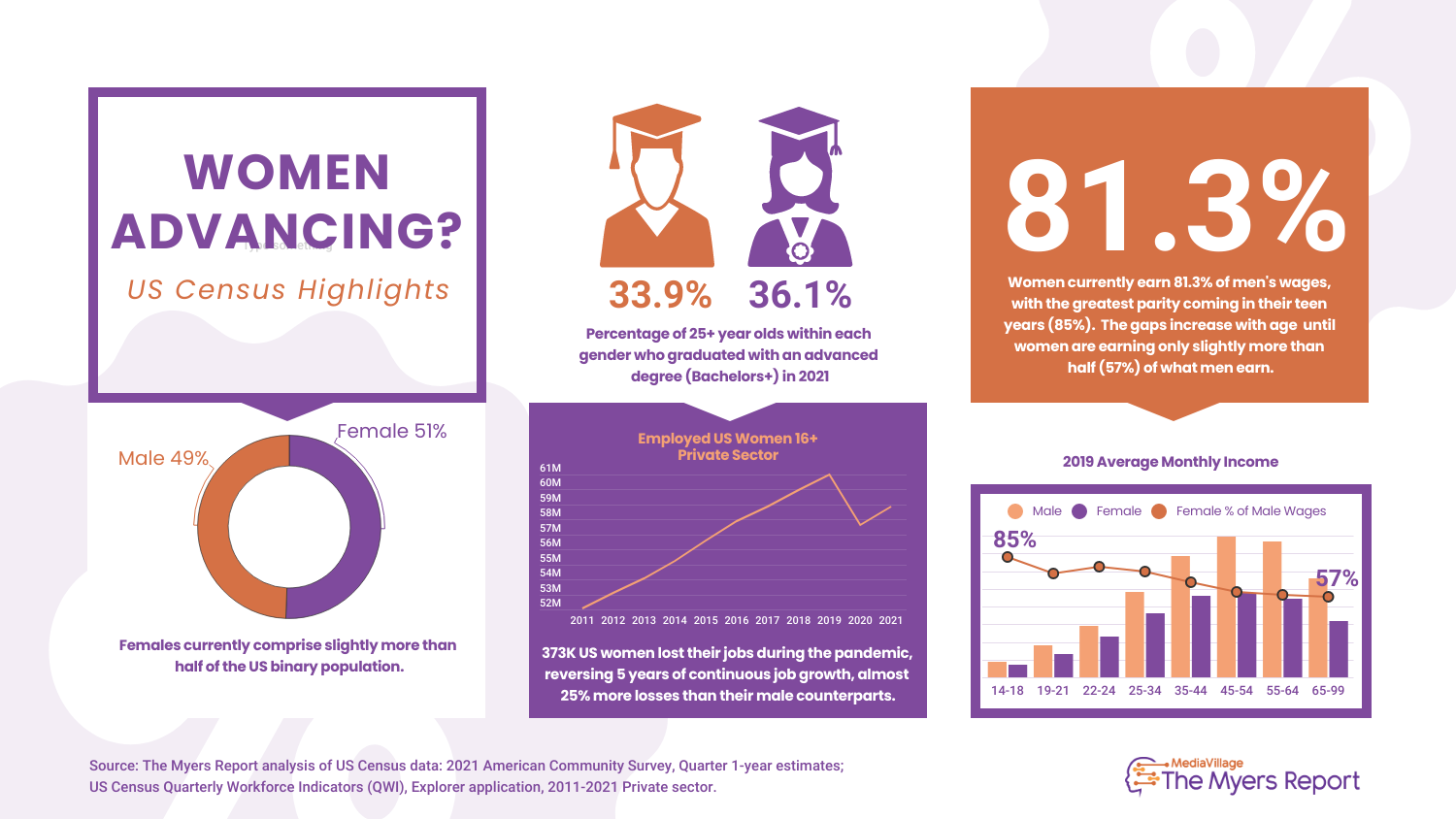
Although women make up slightly more than half of the binary (male/female) population and are earning advanced degrees at a higher rate than men, they have been disproportionately disadvantaged from the COVID pandemic with job losses and continue to struggle to earn comparable wages. In fact, March was selected as the month to celebrate Women's History because women have to work 14.5 months (an additional 2.5 months to the middle of March) to make the same wages that men make in a regular 12-month period. In reality, that's just an average figure. A woman's best chance of earning equitable wages starts and ends before adulthood when they earn 85 cents for every $1 a man does. Once women enter the workforce as adults, they consistently earn less until at retirement age they are earning 57% of men's compensation.

Globally, the pandemic was particularly hard on women who lost their jobs at higher rates (5% vs 3.9% among men) partly because women were disproportionately employed in sectors that were hit hardest by lockdowns, but also because of additional pressures of providing child and elder care at home. Several studies have pointed to the fact that when care establishments closed down during the pandemic, housework, childcare and eldercare responsibilities fell disproportionately on women, creating greater stress and lowered job productivity. And as the job market attempts to recover amid recessionary strain, a June 2022 LinkedIn study documented a reversal in up to two years of progress as women are being hired at a slower rate and are less likely to obtain leadership roles in multiple industries. Lean In and McKinsey & Co. also conducted a study of women leadership in 2022, finding that women are leaving leadership roles at a faster rate than ever before. The study cited examples of microaggressions that undermine women's authority (challenging their judgment or qualifications) as well as female leaders burning out on extra work that improves corporate culture, productivity and DEI efforts but is not financially rewarded or considered at promotion time. According to the World Economic Forum, it will now take 135.6 years to achieve gender parity, a 36-year increase from the estimated 99.5 years pre-pandemic, delaying another generation of women from achieving true equality.
So how does all this translate in the ad-supported media industry which has typically seen better overall representation of women in both the general workforce and leadership roles?
State of Gender Parity in the Advertising and Media Business
Two specific studies have been conducted since the pandemic to shine some light on how women are faring in the ad-supported media realm -- The Radio Television Digital News Association (RTDNA) and The WICT Network, an organization that empowers women in media, entertainment and technology. Each highlights different facets of the industry, exposing gains (if not equity) in broadcast stations, news organizations, MSO distributors and programmers:
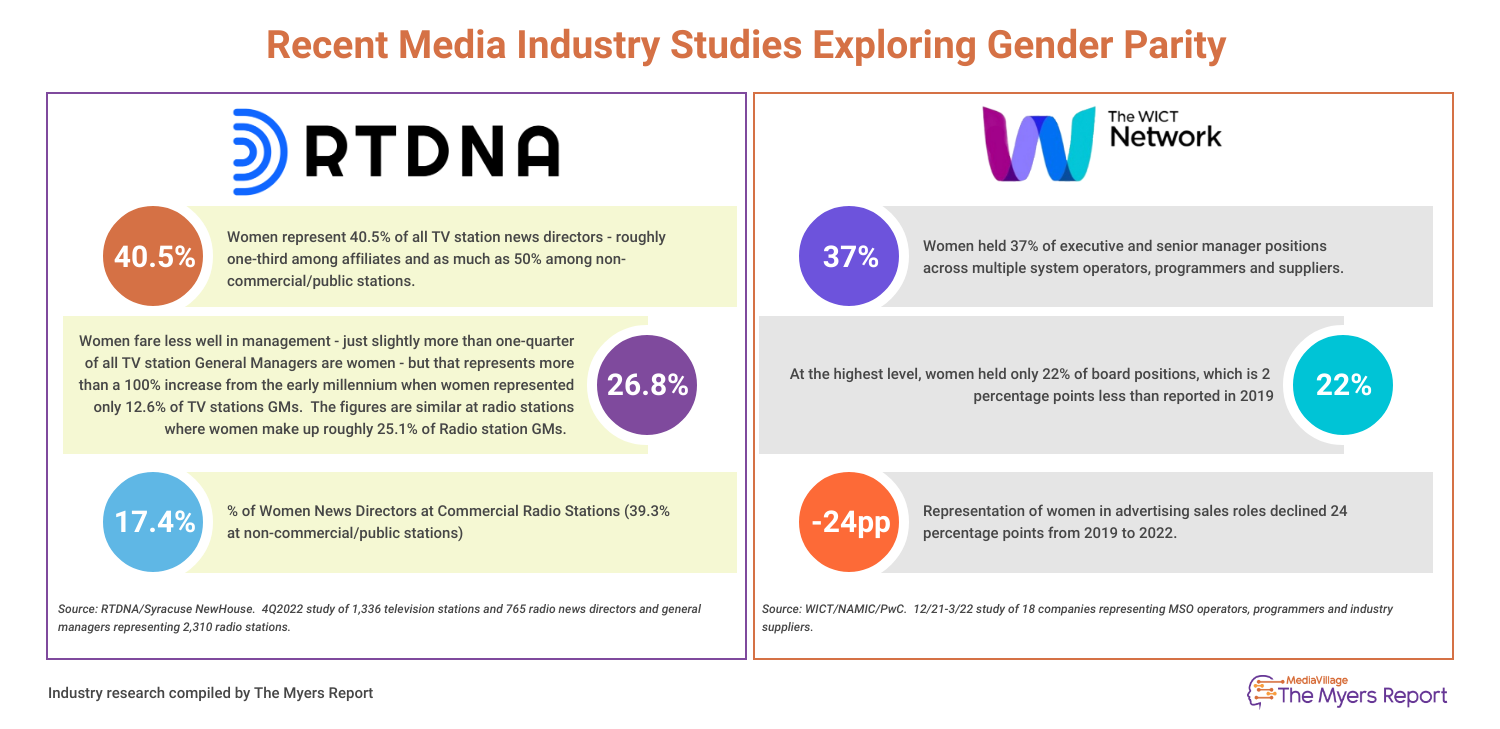
The Myers Report conducted the most recent study of the Workforce and Workplace in Transition this past summer. Over 2300 professionals across agencies, media companies and marketers affirmed that women still make up slightly more than half of the total workforce, particularly among the agency community:
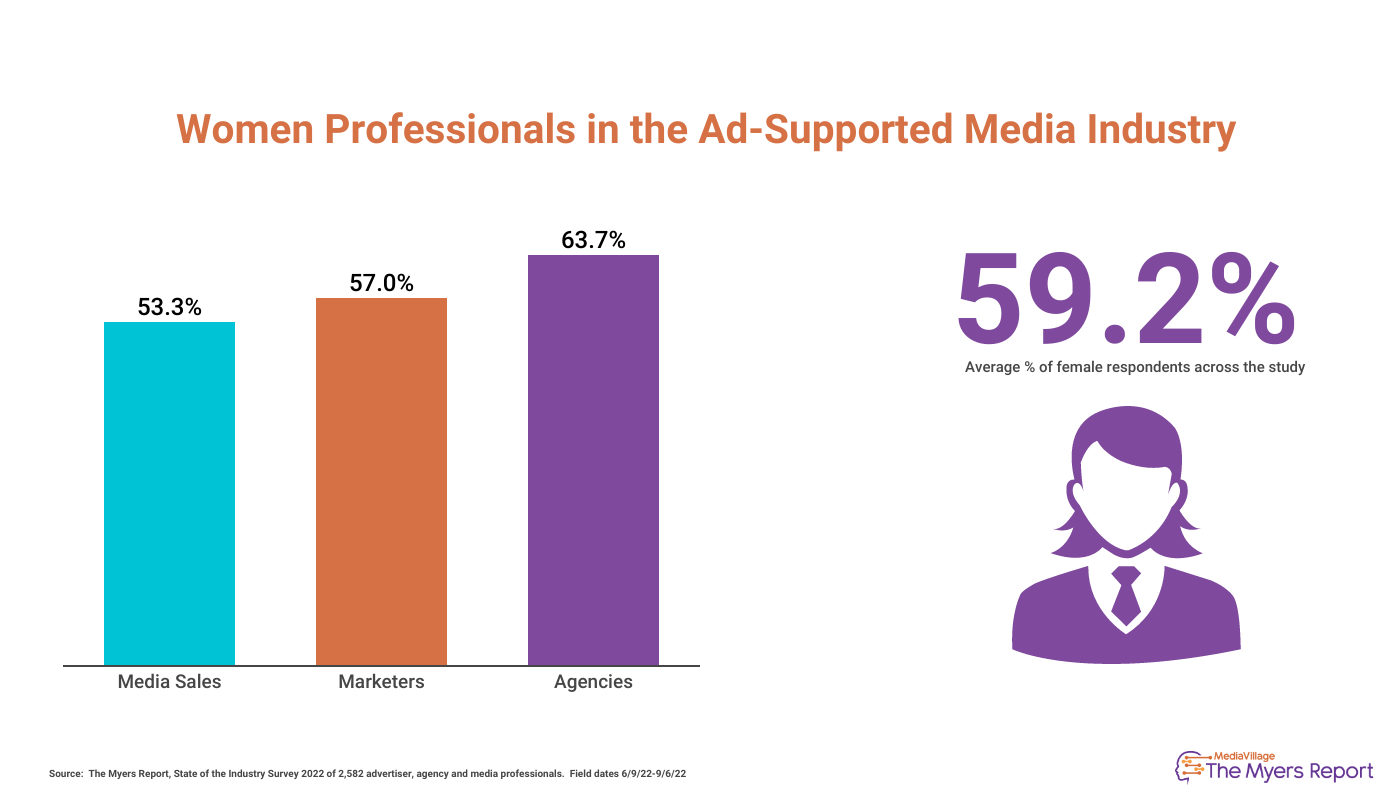
Returning to the office for these women is a mixed proposition. All professionals in the study expressed a desire for workplace flexibility, with 72% preferring to sometimes work on a job site. Just over a quarter of women overall (26.2%) preferred to "never" work on a jobsite -- inching slightly ahead of their male counterparts (22.3%). This gap widens, however, when we start to look at ethnic women employees, confirming the World Economic Forum conclusions about women's strained work/job responsibilities are also at play within the ad-supported media industry.
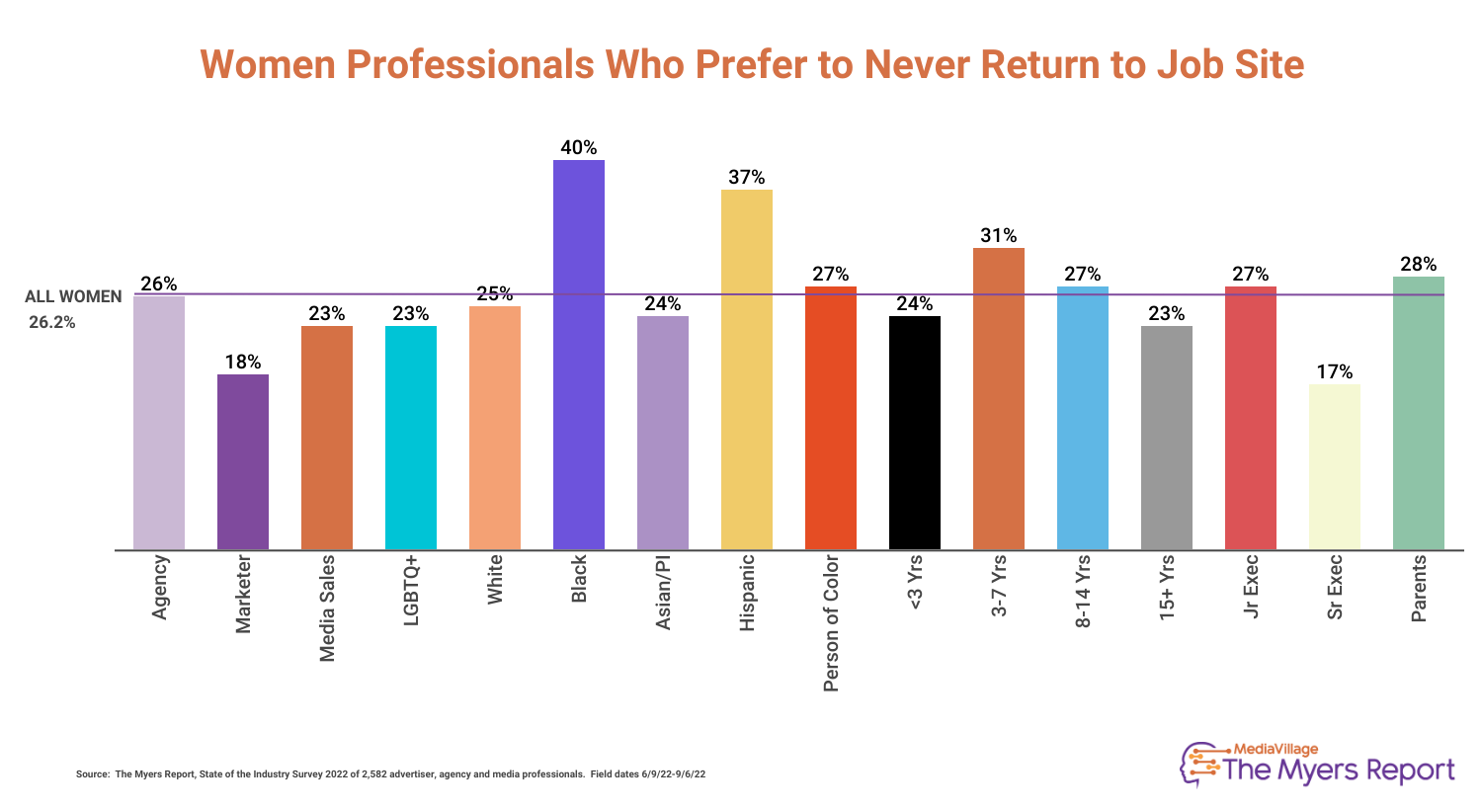
As organizations struggle to create culture amid rapid change, economic uncertainty and remote work modes, building psychological safety among employees is critical. Cited as the most important factor in building strong, innovative teams, psychological safety is all about creating a work environment where employees feel safe to express opinions or ideas that may be contrarian, invite criticism or challenge leadership without fear of repercussions. The Myers Report study revealed that women and men respond similarly across several metrics of psychological safety, except one: empowerment to take risks on behalf of their company. Here the groups diverge with men holding a 7-point lead over their female colleagues.
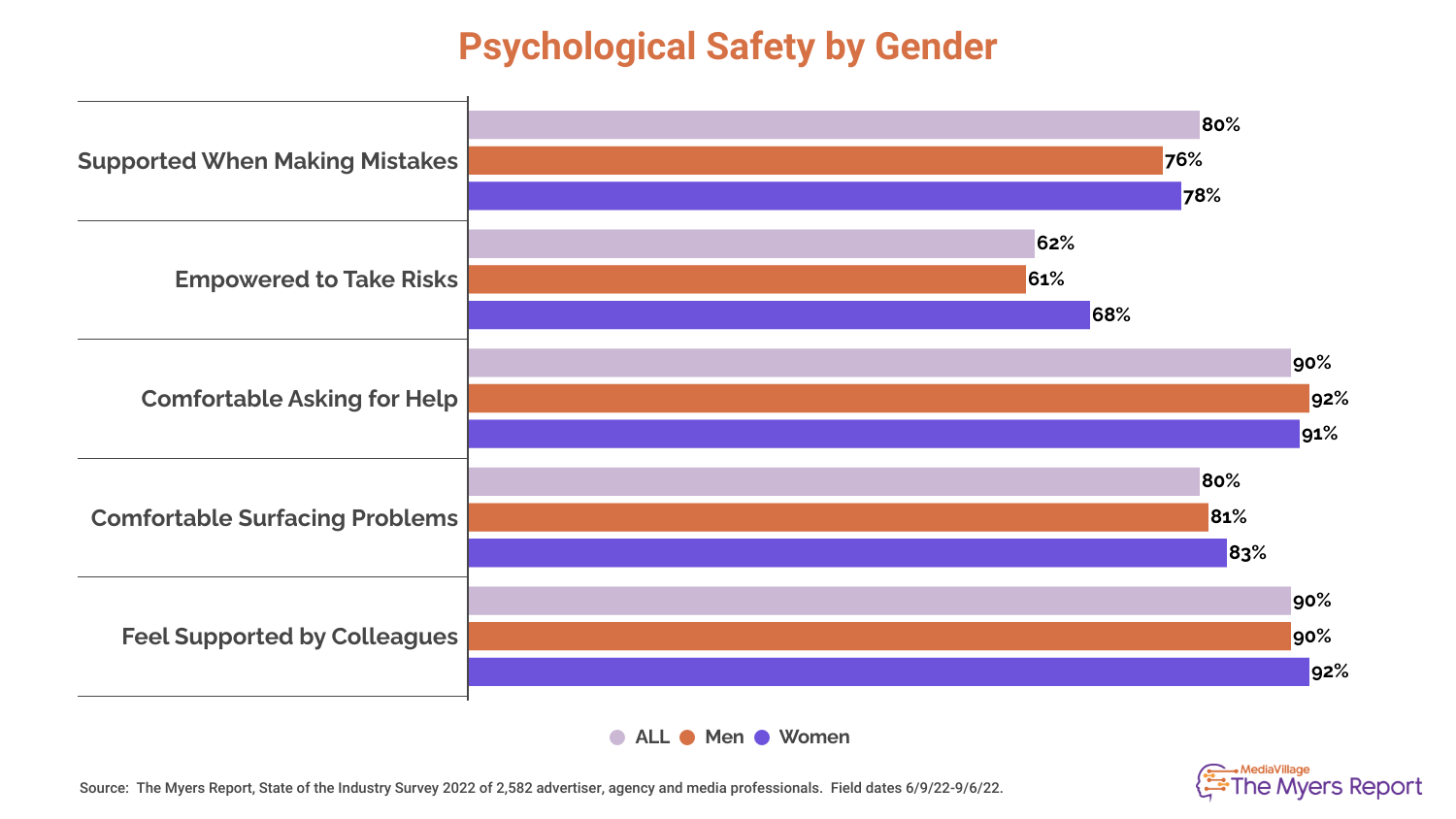
The rise of Employee Resource Groups (ERG) on the job has provided many with an opportunity to explore new ways to find connection and inclusion. 82% of respondents claimed that their companies offer such groups (85% among women), and for those women who do not have access, many offered the types of groups they would find most helpful. Not surprisingly, these groups focus on navigating professional life and motherhood, mentorship and leadership skills:
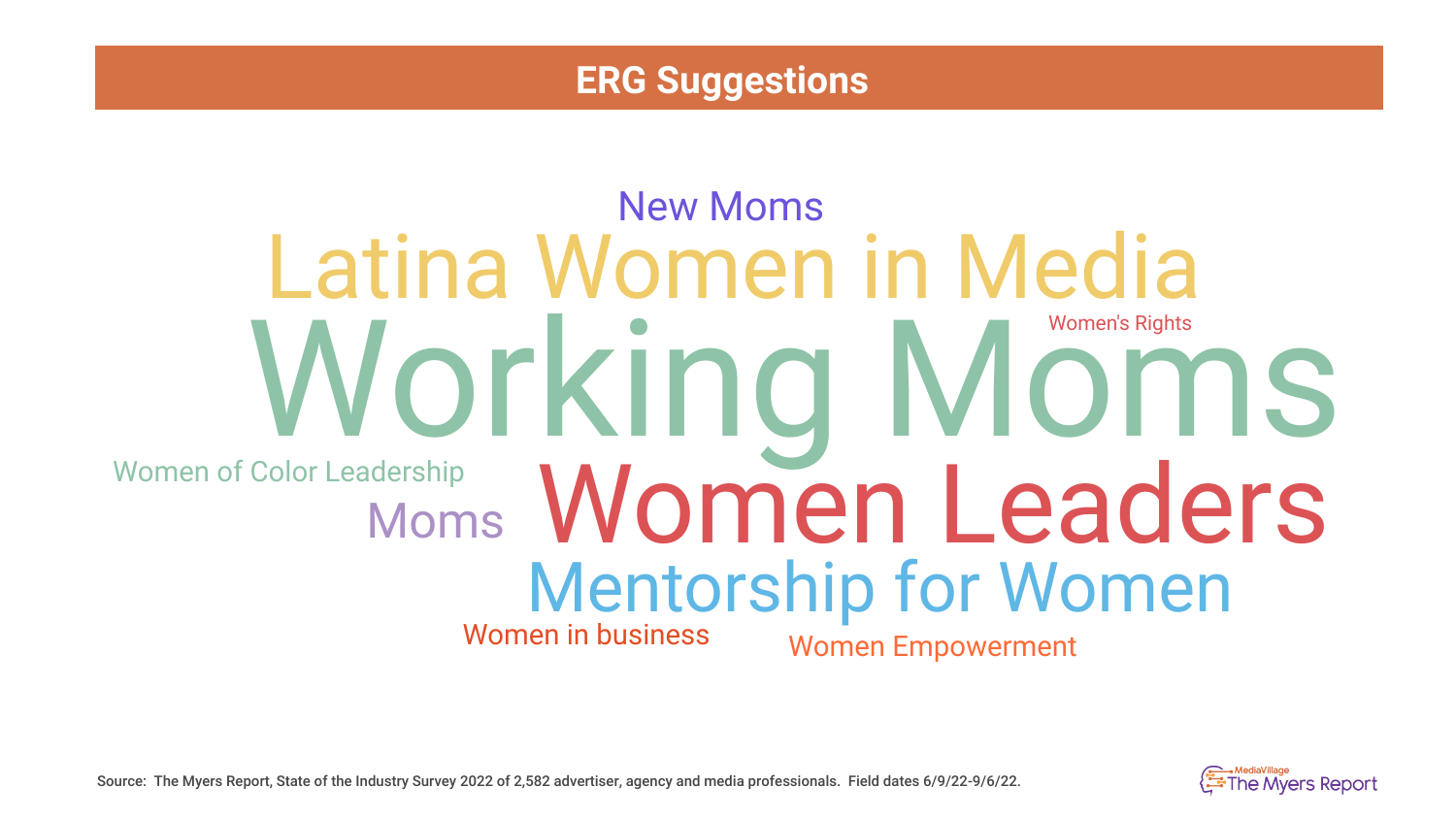
At Risk Employees
As inflation and uncertainty were beginning to expand this summer, The Myers Report was in the field asking industry professionals about their intentions to remain in their current roles or seek other opportunities within or outside their organizations. Women differed significantly from men in their aspirations for growth. While women are primarily seeking growth inside their current organizations, men are more inclined to be looking outside their current companies for their next career steps. This is true across most groups (47%), but particularly for Black and Asian American women (53%) as well as Junior Executives (54%).
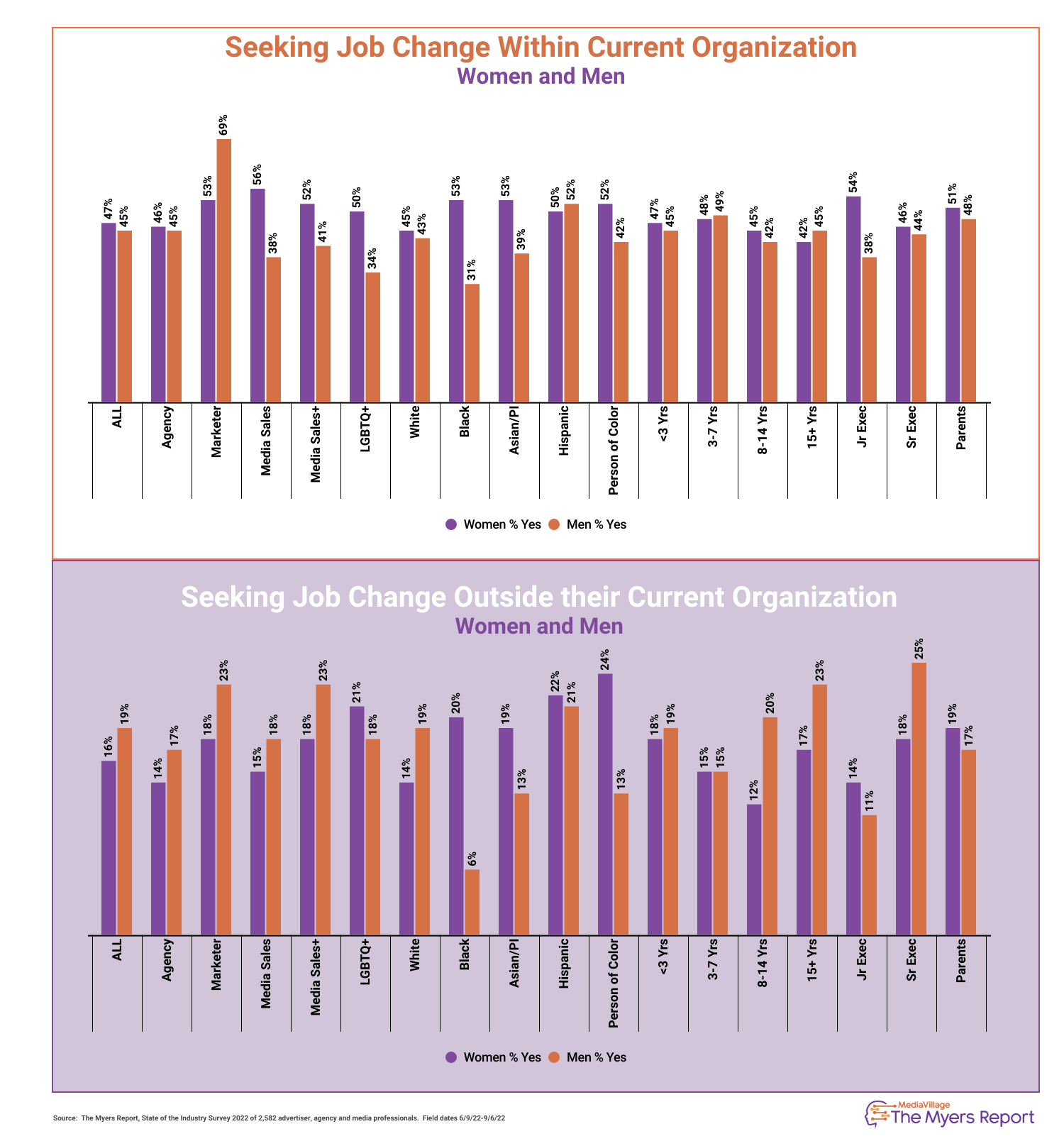
Finally, as social responsibility is taking center stage at corporations today they will likely find that women are leaning into opportunities to engage more than men. On average 80% of respondents to The Myers Report study agreed that social responsibility was important to them personally -- but two significant gaps were identified -- (1) those between men and women, and (2) those between younger and more experienced professionals.
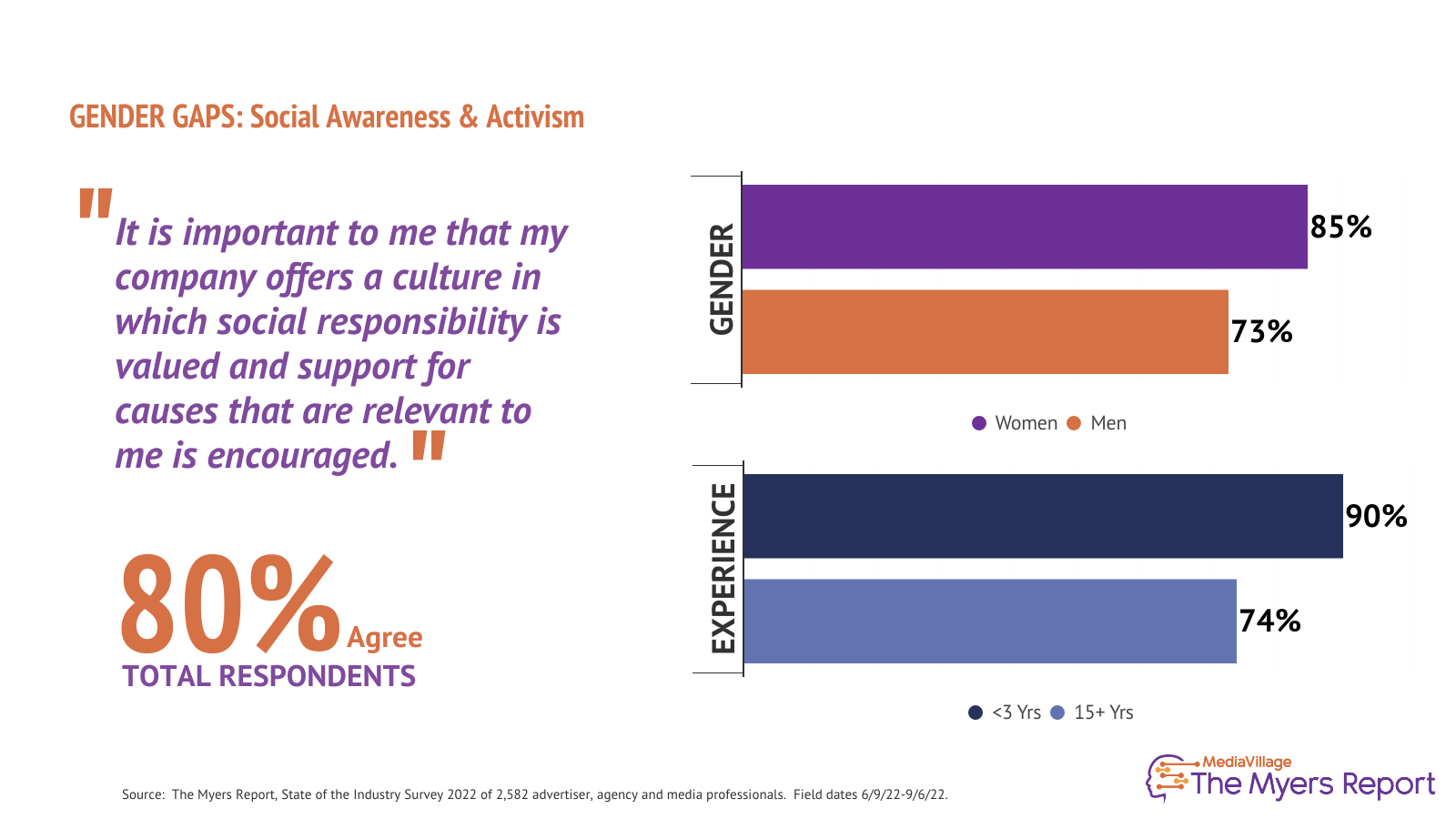
As we pause to celebrate International Women's Day and Women's History Month, the latest indicators from national, global and industry-specific studies make it clear that while women are advancing, they still face significant hurdles to achieving gender parity within the current century. Beyond tracking employment statistics, job roles and pay equity, The Myers Report study points to important work that still needs to be done around flexibility, psychological safety and inclusivity. True gains will come when women are both equitably employed and empowered.
Click the social buttons to share this story with colleagues and friends.
The opinions expressed here are the author's views and do not necessarily represent the views of MediaVillage.com/MyersBizNet.


